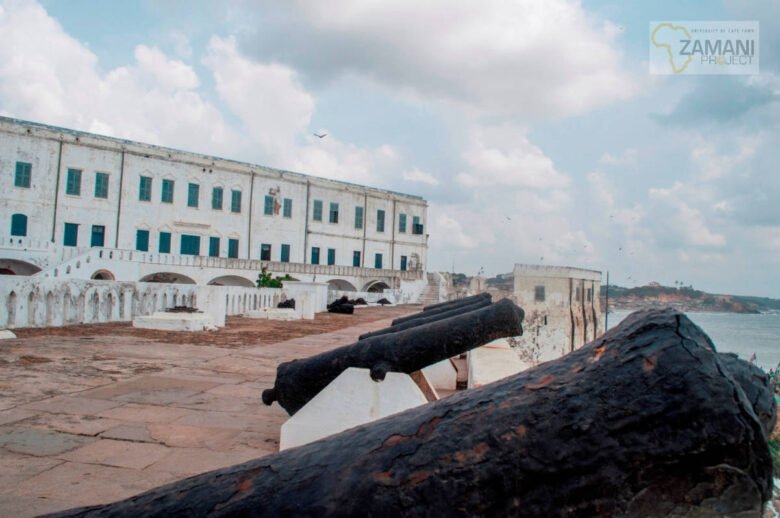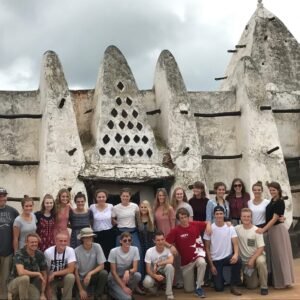Ghana’s UNESCO World Heritage Sites and Why You Should Visit Them
Ghana is home to some of West Africa’s most significant cultural and historical landmarks—two of which have earned recognition as UNESCO World Heritage Sites. These sites are not only remarkable for their architectural and cultural value but also for the deep, often painful history they preserve. Visiting these places offers travelers more than a sightseeing experience; it provides meaningful insight into Ghana’s role in global history and African heritage.
This guide explores Ghana’s official UNESCO World Heritage Sites, why they matter, what you’ll experience when visiting, and practical tips for your journey.
1. Forts and Castles, Volta, Greater Accra, Central and Western Regions
Designated: 1979
Type: Cultural
Locations: Cape Coast Castle, Elmina Castle, Fort St. Jago, and several other coastal forts
Why It’s a UNESCO World Heritage Site
This grouping of European-built forts and castles along Ghana’s Atlantic coast is recognized for its significance to the transatlantic slave trade. These structures—originally built for trade in gold and other commodities—became key points for the capture, imprisonment, and exportation of enslaved Africans across the Atlantic.
Ghana’s forts and castles tell a painful but essential story of exploitation, resistance, and the enduring legacy of slavery on the continent and in the diaspora.
Notable Sites to Visit:
Cape Coast Castle
- Built by: The Swedes, expanded by the British
- Highlights: The “Door of No Return,” dungeons, West African Historical Museum
- Experience: Emotional, immersive guided tours that recount the harrowing realities of the slave trade
Elmina Castle
- Built by: The Portuguese in 1482
- Significance: The oldest European building in sub-Saharan Africa
- Highlights: Slave quarters, punishment cells, Governor’s chamber
- Experience: Historical tours with context on Portuguese, Dutch, and British influence in Ghana
Fort St. Jago
- Located on a hill overlooking Elmina
- Offers panoramic views and military history
Other Recognized Forts Include:
- Fort Good Hope (Senya Beraku)
- Fort Metal Cross (Dixcove)
- Fort Amsterdam (Abandze)
- Fort Apollonia (Beyin)
These sites vary in preservation, but each tells a unique part of Ghana’s interaction with European powers and resistance to colonial control.
Why You Should Visit
- To confront the realities of the transatlantic slave trade and honor its victims
- To better understand the historical context of African diaspora communities
- To explore architectural evolution through centuries of European occupation
- To reflect on global historical connections, particularly in Black heritage
Travel Tip: Entry fees range from GHS 40–70 (about $3–$6). Tours are available at all major castles, and it’s best to visit with a guide for context.
2. Asante Traditional Buildings
Designated: 1980
Type: Cultural
Location: Around Kumasi, Ashanti Region (sites include Besease, Patakro, and Asawase)
Why It’s a UNESCO World Heritage Site
The Asante Traditional Buildings are the last surviving examples of traditional architecture from the Ashanti Empire—one of Africa’s most powerful pre-colonial kingdoms. These clay-and-thatch shrines, homes, and ceremonial spaces reflect the spiritual and cultural heritage of the Ashanti people and their continuing traditions.
They stand as a unique form of West African architecture and symbolize resistance to colonial cultural erasure.
Highlights of the Asante Buildings:
- Built from: Mud plaster and timber with intricate carvings and symbolic Adinkra motifs
- Function: Shrines dedicated to ancestral spirits and royal deities (abosom)
- Design: Richly patterned walls, low entrances, internal courtyards, and gender-specific areas
- Spiritual Role: Still used in religious rituals and community functions
Many of these buildings are located in rural villages near Kumasi and maintained by local priestesses or caretakers.
Key Sites to Explore:
| Village | Notable Feature |
|---|---|
| Besease | Well-preserved shrine with Adinkra designs |
| Patakro | Known for its spiritual rituals |
| Asawase | Historical importance to the Ashanti court |
Why You Should Visit
- To appreciate indigenous African architectural genius
- To see how art, spirituality, and daily life are blended in Ashanti culture
- To understand the resilience of African traditions under colonial rule
- To experience rural Ghanaian life beyond urban centers
Travel Tip: Most shrines charge a small entry fee (GHS 10–20), and photography may be restricted. Dress modestly and ask before entering sacred spaces.
Getting There: You can hire a taxi from Kumasi or arrange a tour through the Manhyia Palace Museum or local guides familiar with the region’s cultural routes.
Are There Other UNESCO-Recognized Sites in Ghana?
Not officially—yet. However, several sites have been tentatively nominated for future recognition, including:
- Nzulezu Stilt Village: A village built entirely on stilts over Lake Tadane in the Western Region.
- Tano Sacred Grove: An ecologically and spiritually important forest in the Ahafo region.
- Kintampo Waterfalls and Shrines: With archaeological and spiritual significance.
- Slave Route Sites (like Salaga): Important nodes in the trans-Saharan and coastal slave trades.
You can view Ghana’s Tentative List on the UNESCO World Heritage Centre site for updates on future nominations.
Practical Travel Tips for Visiting UNESCO Sites in Ghana
- Guided tours are essential: These sites are steeped in complex history—context makes the experience more meaningful.
- Respect cultural norms: Especially at religious or community-based sites. Ask before taking photos or entering sacred areas.
- Support local communities: Buy souvenirs from on-site artisans and tip official guides.
- Plan ahead: These sites can get crowded during school holidays or festival periods (e.g., March, July, December).
- Combine visits: Many UNESCO sites are close to other major attractions—Cape Coast Castle and Kakum National Park can be done in one day, for example.
Conclusion
Ghana’s UNESCO World Heritage Sites are more than historic landmarks—they’re living narratives of struggle, survival, culture, and identity. Visiting them offers an education you can’t get from books alone.
Whether you’re tracing the story of the Ashanti Kingdom through sacred buildings or standing inside the stone walls of a centuries-old slave castle, these sites offer powerful encounters that connect the past to the present.
If you’re traveling to Ghana, make space in your itinerary to experience these internationally recognized sites—they offer not just lessons in history, but moments of reflection, reverence, and awe.




